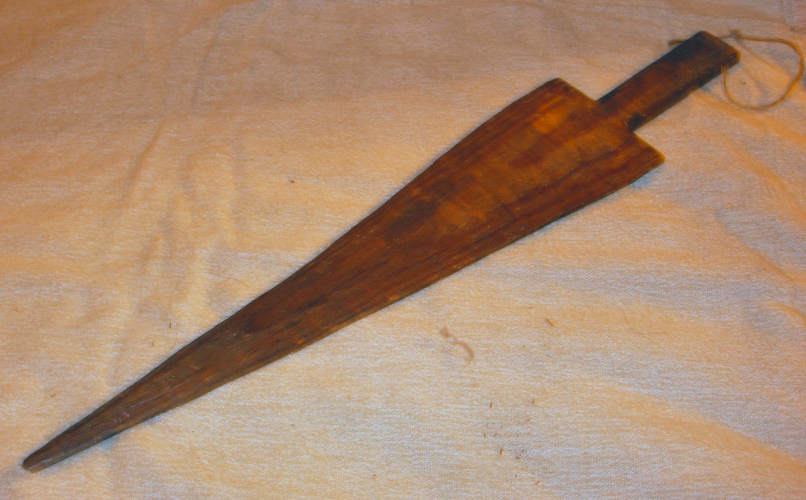


| The 'old people' used to say, if children were misbehaving, that they were going to get a scutching. This meant that they were going to be paddled with a wooden paddle across their rumps. The scutching knife was the origin of both, the phrase and the wooden paddle. The scutching knife was the second tool to be used in the process of spinning. Following being broken in the flax break, the farmer would take up a handfull of the woody stems in one hand, and position it over the edge of an upright block of wood. In the other hand, he would hold a scutching, or swingling, knife. Slashing the scutching knife downward, along the side of the block, and against the mangled stems of flax, the farmer would knock off the hard, outer bark and the broken pieces of the core, while retaining hold of the more sinuous inner fibers. The flax would be repositioned so that the part previously held in the hand of the worker would be draped over the block to be scutched. It was said that a man could scutch or swingle about forty pounds of flax during a day's time. The pieces of bark and core that were knocked off by the scutching was known as the boon. The boon was not thrown away; it was used for other purposes. The sinuous flax fibers were now ready for hackling on a hatchel. This scutching knife measures 18-3/4" long and 3-1/2" wide. |
